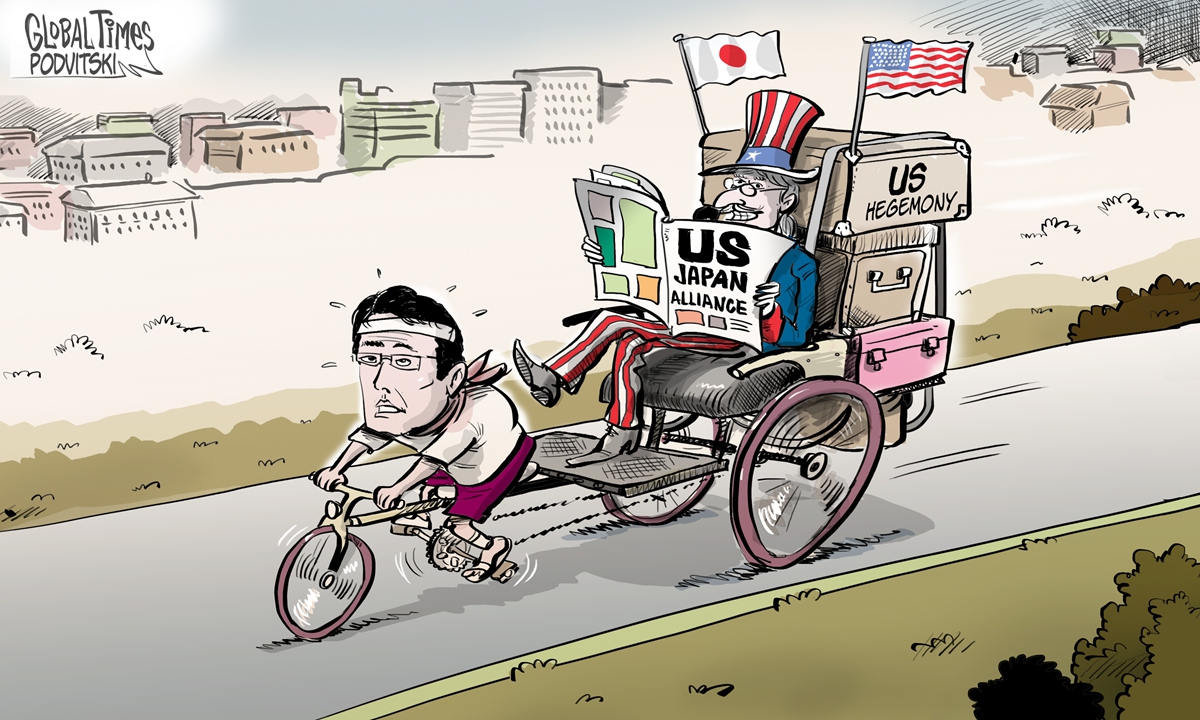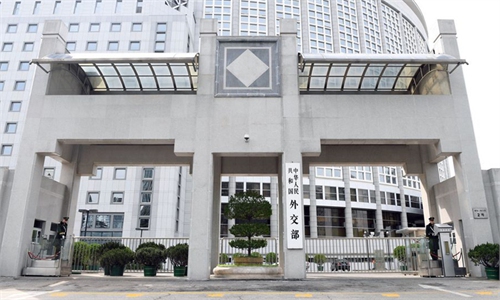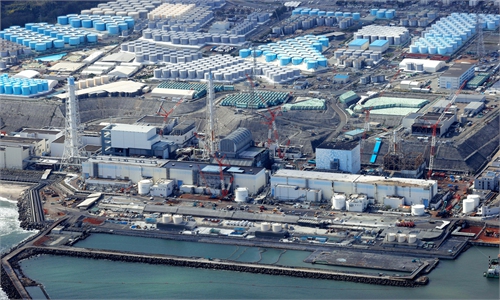Tokyo’s collusion with Washington main reason pushing Straits into ‘sinister period’

Well-trained pawn Illustration: Vitaly Podvitski
Japanese Ambassador to the US Tomita Koji said in an interview on Tuesday that the US and its allies must balance sending a clear message to the Chinese mainland over Taiwan with the need to avoid escalation as Asia enters a "sinister period" of tensions. He claimed that China sought to use US House Speaker Nancy Pelosi's visit to Taiwan as a "pretext to do something very aggressive" and change the status quo in the Taiwan Straits.The ambassador's remarks reversed cause and effect. The crisis is fundamentally caused by US lawmakers and the US government's attempt to hollow out one-China policy by taking a "salami slicing" strategy. Instead, Tomita is shifting the blame to China, which intuitively shows that Japan is anxious to instigate chaos in the Taiwan Straits. On the one hand, Japan is catering to US' demand on related issues, i.e., to increase tensions and create confrontation; on the other hand, Tokyo intends to fish in troubled waters aiming at constitutional revision and the strengthening of its military capabilities, as a premise for its future collusion with the US on the Taiwan question.
Obviously, Pelosi's illicit visit to Taiwan is not isolated, after which there has been close cooperation between Washington and Tokyo, including the G7 joint statement on this issue and Japan's subsequent delegation of parliamentarians to Taiwan. Tomita's words further reflect that both countries not only intend to converge on their previous policies, but to coordinate more on military cooperation and their political and security support to the Taiwan authorities. As Liu Jiangyong, vice dean of the Institute of Modern International Relations at Tsinghua University, pointed out, the root cause of potential tension in the Straits is provocation and interference from the US and Japan.
The current situation in this area is a kind of evil consequence of the US strategic layout in the Asia-Pacific region. Washington continues to reinforce its military presence in the region, and to consolidate its alliance system by creating strife and crises. And Tomita made it clear that Japan needs to step up efforts to upgrade its "deterrence and capabilities" in the context of the alliance cooperation, a proof of the country's desire to enhance its military existence within the US strategy, which could lead to more serious crises in the Asia-Pacific.
The US and Japan have been making verbal statements these years of a wish to peacefully resolve the Taiwan question, while increasing their military deployments and adopting joint military exercises that are offensive against the Chinese mainland. And Japan's recently-reported consideration of deploying more than 1,000 long-range cruise missiles to its far-flung southwestern islands and the Kyushu region is actually targeting the economically developed coastal areas of China.
As for Japan itself, Liu noted that there have been two national development routes within the country. One is proposed by former Japanese Prime Minister Hatoyama Yukio, who advocates to properly deal with the historical legacy issues with its neighboring countries and form an East Asian community based on peaceful development. The other is formed during the Abe Shinzo administration and continued by the current Prime Minister Kishida Fumio, attempting to make Japan a country that can legally use military power abroad, while promoting the so-called "free and open Indo-Pacific" strategy against China, which is a comprehensive one involving security, supply chain, values, and foreign policy.
It should be noted that Japan is currently trying to include Taiwan into US-led regional alliance system, as it has been trying to absorb the chip production capacity and technology of Taiwan Semiconductor Manufacturing Company into Japan, attaching the island's related industries into the so-called "Indo-Pacific supply chain." Tomita's remarks are a part of the strategy.
Unfortunately, according to Liu, amid Japan's right-leaning trend, Hatoyama's proposal has limited influence and has been marginalized. Under the guide of the "Abe line," Japan tends to instigate the US to further confirm that it will defend the island of Taiwan and abandon the strategic ambiguity, which is quite dangerous.
Japan faces a major choice: Will it be a peaceful country and a major contributor to the regional and world economy, or will it be an "Asian version of the US" seeking hegemony in the region? Will it continue to benefit the world with its scientific and technological achievements, or will it attempt to rely on force to deter its neighbors? Tomita's remarks reflect the lack of a proper assessment in Japan of its future national direction.
Japan's future is in Asia. If it insists to tie itself with the US strategy, there will only be a deeper antagonism in the Asia-Pacific region, causing the detriment of all regional countries, including Japan itself.



